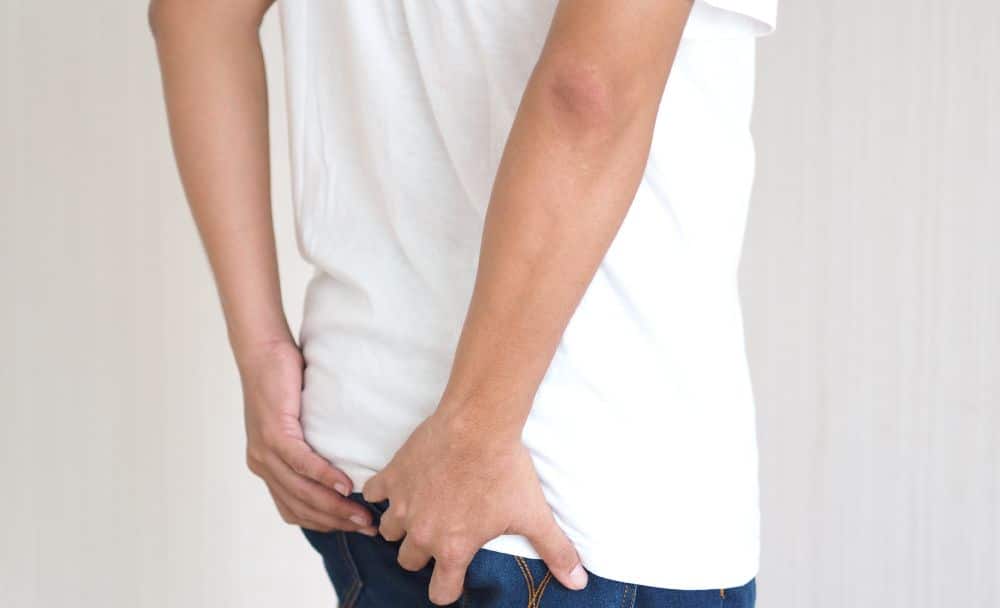An anal fistula refers to a medical condition that affects the anal canal, causing discomfort and potential complications. It results from an abnormal connection or tunnel that develops between your anal canal and the surrounding skin. This condition can be painful and can significantly impact an individual’s quality of life. A fistula manifests in the form of various annoying symptoms such as discomfort, and skin irritation, among others, which do not normally get better on their own but require surgical intervention. [1] Understanding the fistula meaning, fistula symptoms, causes, types, diagnosis, and fistula treatment options associated with anal fistula is crucial.
What is the meaning of anal fistula?
When it comes to the anal fistula meaning, this is essentially a condition that occurs when an anal gland becomes obstructed, causing an infection to occur and ultimately leading to the development of an abscess or anal fistula. The infected gland forms a tunnel, or fistula, that creates an abnormal passage between the inner lining of the anus or rectum and the skin around the anus.[2] This connection allows for the continuous drainage of pus in the nearby tissue, which, when it drains away, leaves a small channel behind.[1]
What are the anal fistula symptoms?
The anal fistula symptoms can vary depending on the severity and location of the condition. Some individuals may also experience recurrent abscesses in the anal region, which can further exacerbate the symptoms. Some of the most common fistula symptoms include:
- Persistent pain, which may become worse when the patient coughs, sits down, moves around, or passes stool
- Irritation in the skin around the anus
- Discharge of pus or blood during the passing of stool
- If there is already an abscess around the anus, there may be swelling, redness, and a high temperature
- A smelly discharge from the area around the anus
- Discomfort or difficulty controlling during bowel movements [1]
What are the causes of an anal fistula?
Several factors contribute to the development of anal fistula. In most cases, this condition is the outcome of an anal abscess that has not healed properly once the pus has drained away. Some of the other causes include:
- Inflammatory bowel diseases such as Crohn’s disease, where the digestive system becomes inflamed
- Trauma or injury to the anal area, such as hidradenitis suppurativa, which is caused by a long-term skin condition that causes abscesses and scarring
- Diverticulitis which is an infection of the small pouches that can jut out of the side of the large intestine or the colon
- Certain infections, such as the ones caused by tuberculosis (TB) or HIV
- Certain medical procedures or surgeries involving the anal canal. [1]
What are the various types of anal fistulas?
There are different types of anal fistulas based on their location and complexity. These include:
- Intersphincteric fistulas
This is usually the result of a perianal abscess, and the tract begins in the space between the internal and external sphincter muscles, which then opens extremely close to the anal opening.
- Transsphincteric fistulas
This usually stems from an ischiorectal fossa abscess, and the tract starts developing in the space between the internal sphincter muscle and external sphincter muscle or in the space behind the anus.
The tract then courses across the external sphincter and opens about one or two inches outside of the opening of the anus. These can eventually wrap around one’s body in a U shape, with external openings on both sides of the anus, and are termed horseshoe fistula.
- Suprasphincteric fistulas
This stems from the supra levator abscess, and the tract starts developing in the space between the internal sphincter muscle and the external sphincter muscle and turns upward to a point above the puborectal muscle. It crosses this muscle and then extends downward between the puborectal and levator ani muscle and opens one or two inches outside the anus.
- Extrasphincteric fistulas
This is usually formed due to a foreign body penetrating into the rectum with drainage through the levators, from penetrating injury to the perineum, from Crohn’s disease or carcinoma. In this case, the tract begins at the rectum or sigmoid colon and extends downward, crosses through the levator ani muscle, and opens up around one’s anus. The main cause of these fistulas is usually an appendiceal abscess, diverticular abscess, or Crohn’s disease.[3]
The majority of fistula are intersphincteric or transsphincteric, and each type requires specific attention and treatment strategies to ensure optimal outcomes.
How can an anal fistula be diagnosed?
To diagnose an anal fistula, a healthcare professional will typically undertake a physical examination of the affected area. A full examination includes an inspection of the perineum, where the doctor checks for any swelling, external opening, pus or fluid, tenderness or abscess, or any other abnormalities such as hemorrhoids or fissures, among others. They may also inject hydrogen peroxide, which allows them to visualize bubbles at internal openings.
Additional diagnostic tests such as a proctosigmoidoscopy, fistulography, anoscopy, or imaging studies like MRI or endorectal ultrasound may be conducted to determine the exact location and extent of the fistula.[3]
How can an anal fistula be treated?
Treatment options for anal fistula depend on various factors, including the fistula type and complications and the individual’s overall health. Conservative fistula treatments may involve the use of medications to alleviate symptoms and promote healing. However, surgical intervention is often required for effective anal fistula treatment
Surgery
Surgical procedures aim to remove the fistula and promote the healing of the affected tissues. The main surgery options that are available are:
Fistulotomy
This fistula treatment procedure involves cutting open the whole length of the fistula so that it heals into a flat scar.
Seton procedures
In this anal fistula treatment, a piece of seton, a kind of surgical thread, is kept in the fistula and left there for several weeks to support the healing process. Post that, yet another procedure is carried out to treat it.[1]
What are the anal fistula Ayurvedic treatments?
Anal Fistula Ayurvedic treatments involve taking a Sitz bath (Ushna Avagaha Sweda), opting for Ksharasutra (Ayurvedic Seton) and applying oils like Nirgundi Oil, and taking Triphala-Guggul pills.
- Sitting in a warm bath can reduce the pain and discomfort associated with Anal Fistula. You may add Triphala powder for added benefits. This herbal sitz bath can relax the rectal muscles and stimulate the nerves in that area.
- Ksharasutra involves the tying of a surgical thread generously coated with medicinal herbs. This will cut out the damaged tissues and heal the wound and underlying tissues in a couple of days.[4]
- Nirgundi Oil is extracted from ‘Vitex negundo’ (Chinese Chastetree).It is an excellent analgesic and natural antibiotic.
- Herbal extracts of Triphala and Guggul can trigger the peristaltic movements of the intestine. These herbs can boost blood flow to the rectal area, strengthen your gut, help you move your bowels easily, and can tone the gastrointestinal tract. These herbs, in other words, can speed up the healing process in someone with Anal Fistula.
FAQs
- Does an anal fistula require a follow-up treatment?
Surgery is usually the best approach to deal with anal fistula, and your doctor may ask you to soak the affected region in a warm sitz bath which is also considered a fistula treatment in Ayurveda, as well as take stool softeners or laxatives for some time. To reduce post-surgery pain and discomfort, your physician may also inject local anesthetic such as lidocaine as well as prescribe pain pills to decrease the uneasiness.
- What are the anal fistula risk factors?
Some of the risk factors for an anal fistula include high daily salt intake, history of diabetes, hyperlipidemia, history of smoking and alcohol intake, dermatosis, anorectal surgery, sedentary lifestyle, excessive intake of spicy and oily food, inactive or less participation in sports and prolonged sitting on the toilet for defecation. [5]
- What is Fibrin Glue, and how does it help the anal fistula?
This is the only non-surgical option for treating the fistula and is directly injected into the fistula to seal the tract. It is a topical biological adhesive that comprises a solution of concentrated human fibrinogen. This is then activated by the addition of bovine thrombin and calcium chloride.
Conclusion
An anal fistula is a challenging medical condition that can cause significant discomfort and impact the daily lives of affected individuals. Recognizing the fistula symptoms, understanding the causes, identifying the different types, and obtaining an accurate diagnosis, as well as understanding the actual fistula meaning, are crucial steps in managing this condition effectively. Timely and appropriate fistula treatment, whether conservative or surgical, can help alleviate symptoms and promote long-term healing, ultimately improving the quality of life for those affected by anal fistula.
Disclaimer: This article is written from a health and wellness perspective only and is not a piece of medical advice. Kindly seek the help of a certified medical practitioner before initiating any treatment.



















